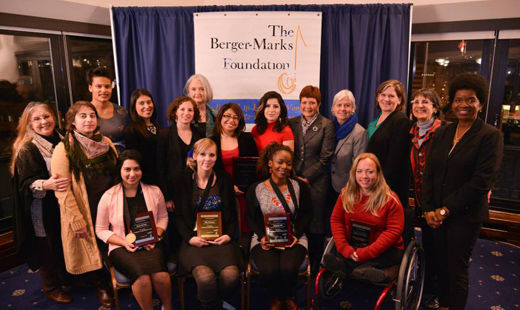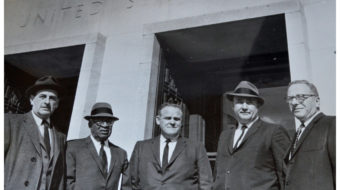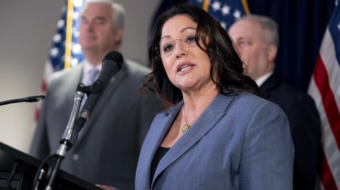
WASHINGTON (PAI) – A new report from the Berger-Marks Foundation gives working women a “how-to” guide to establish women’s committees within unions, increase their influence and achieve goals important to women workers. It also is meant to help existing women’s committees expand and grow.
The Guide to Organizing Women’s Committees by New York consultant and journalist Jane LaTour and Cornell University Professors Lois Gray and Maria Figueroa points out both the frequent need for women to organize their own advocacy groups within unions, and how to navigate the politics of doing so in order to achieve working women’s goals.
The report is based on findings of “most effective strategies, programs, and objectives of established women’s committees at a range of local and international unions and worker centers,” that Gray and Figueroa discussed in a study for Berger-Marks last year.
LaTour notes that unions “limited the participation of women or organized them into separate unions.” While those legal restrictions are now off the books, “genuine, systemic equality for women at the workplace, in their unions, and within the labor movement is still unrealized.”
If an organization or union needs to encourage more working women to become active, if it doesn’t address issues such as pay equity, sexual harassment and worksite discrimination, if there are few women leaders, if there are “women with a strong interest in acting as catalysts to challenge the status quo, yet who are not involved in” the organization’s activities, and if there’s a lack of skills training and mentoring of new female leaders, then the organization or union may well need a women’s committee, LaTour’s report adds.
While advocating such a group, she also adds some practical advice: Working with existing leaders, when possible, figuring out the internal politics beforehand and how to use them to working women’s advantage, creating a specific agenda of issues to attract a wide spectrum of working women, and additional community outreach.
And the leaders of any new working women’s group should also emphasize that its presence – and including its agenda – will make the union stronger as a whole and benefit it, LaTour says. “More women get involved in organizational activities, resulting in unity in bargaining and enhanced effectiveness in political action,” she explains.
But to accomplish those twin goals, “Research shows women need independent space to identify and create their own culture where they can speak out about concerns and identify strategies to engage with and change the dominant culture,” the report adds.
“Find some sisters to puzzle things out and proceed together,” the report urges. “Figure out who has an interest in changing things – those who take an interest in issues, who question the status quo and ask good questions – then try to enlist them in your project and make common cause with these like-minded sisters.”
“It’s important to keep in mind that unions are political institutions,” LaTour warns. “All of the players you’ll be interacting with hope to stay in office. So find the overlap – the place where it is in their interest to support your goals.” She adds, “Remain diplomatic. Always try to achieve the desired result without alienating officials who may need to be brought along gently…. It’s up to you to learn how things work, officially and unofficially.”
Informal social networking – from Facebook to bake sales – can help boost the cause, too. One union’s working women’s committee held a bake sale with two prices per item: $1 for items sold to men and 77 cents for those sold to women, to highlight the wage gap.
Case studies in the report show that “targeted programs for women are particularly helpful” when women are a small minority of members who “must struggle for recognition on the job and in the unions,” or where women are underrepresented as leaders.
“Opportunity for networking and leadership development plays an important role in motivating women to participate, gain experience and training, and begin to express their views,” while integrating them into the union’s or organization’s mainstream, LaTour adds.
“Separate outreach plays an important role in involving women and tapping their potential for leadership in worker organizations, an outcome essential to the growth and power of workers’ organizations,” she writes.
The new report and accompanying workshop materials are on www.bergermarks.org. The Berger-Marks Foundation, named in honor of a longtime organizer and activist for the Newspaper Guild, aims to bring the benefits of unionization to working women and to assist organizations committed to those principles.
Photo: Berger-Marks Facebook page










